Not many public experiments have been undeservedly conducted in the world of SEO in recent years. We tried to answer the question of whether links are taken into account if they are not in the Search console.
What hypotheses are there?
When we started exploring this issue, we realized that we have only an approximate understanding of how Google can work, so we came up with two basic hypotheses that served as the basis for our future experiment:
- Backlinks start working right after indexing
- Backlinks start working after adding to the Google Search Console
Besides them, we all heard several other assumptions on this issue from different sources:
- Google knows about all links at the time they appear.
- Links start working 6-8 months after they appear on the Internet.
- Links work if they are in Ahrefs
Those opinions were not taken seriously by our team, as they have no evidentiary basis whatsoever but if their supporters have reasoned arguments, it would be very interesting to see them.
How did the experiment go?
To obtain the most current data, we create 2000 backlinks (each link from a unique domain), on each page of which there is one unique anchor.
These links lead to 5 different projects/region projects that have not undergone work for some time and have been rather stable in terms of positions for the last couple of months.
For a good understanding of the results, each link leads to a separate acceptor page.
We were choosing the anchor semantics that did not intersect with the anchors of the links that were included in the Google Search Console for each project. This was to ensure that the interaction of old and new anchors would not affect the purity of the experiment in any way.
A step-by-step experiment algorithm
We describe the sequence of actions during this experiment in as much detail as possible so that everyone could repeat it.
To index and analyze backlinks and work with anchor list we used the LinkBox tool. We will show you a short manual for each stage of the experiment:
- All 2000 links were queued up for fast indexing in Google within three days with the help of Linkbox indexer. For this purpose, we did this:
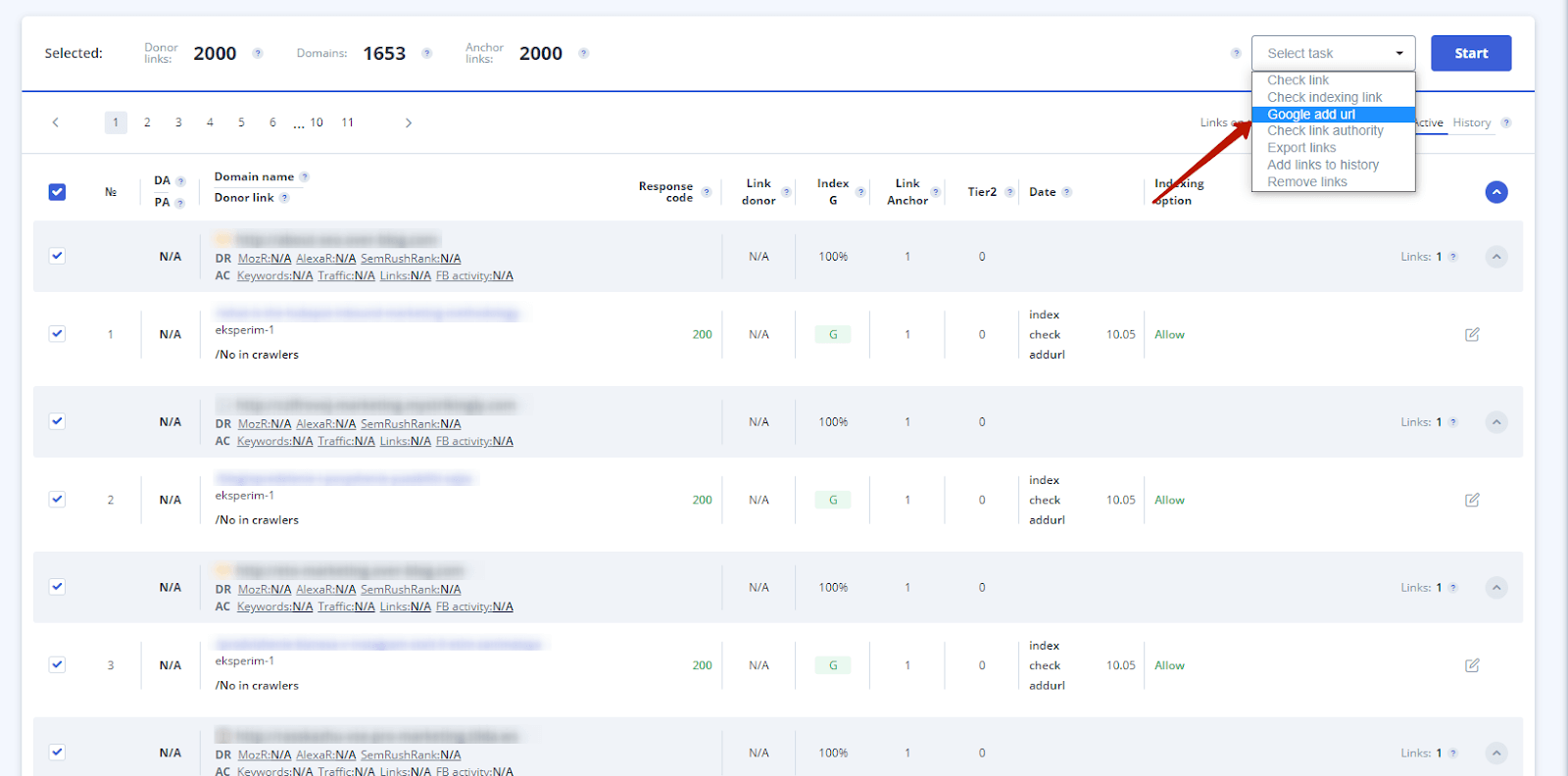
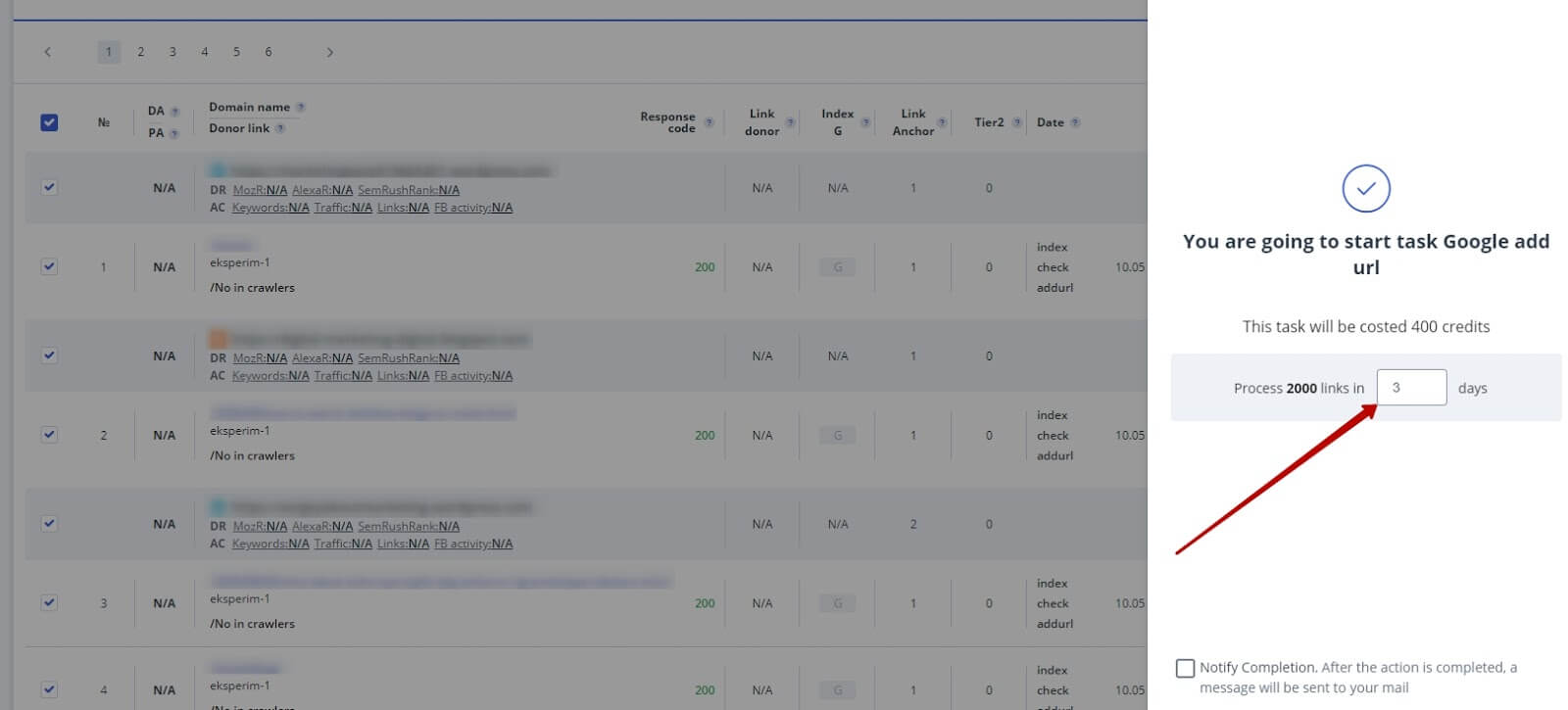
- We checked link indexing every day and noticed that about 1800 backlinks were indexed in the first week. Then, only single links entered the index and left it.
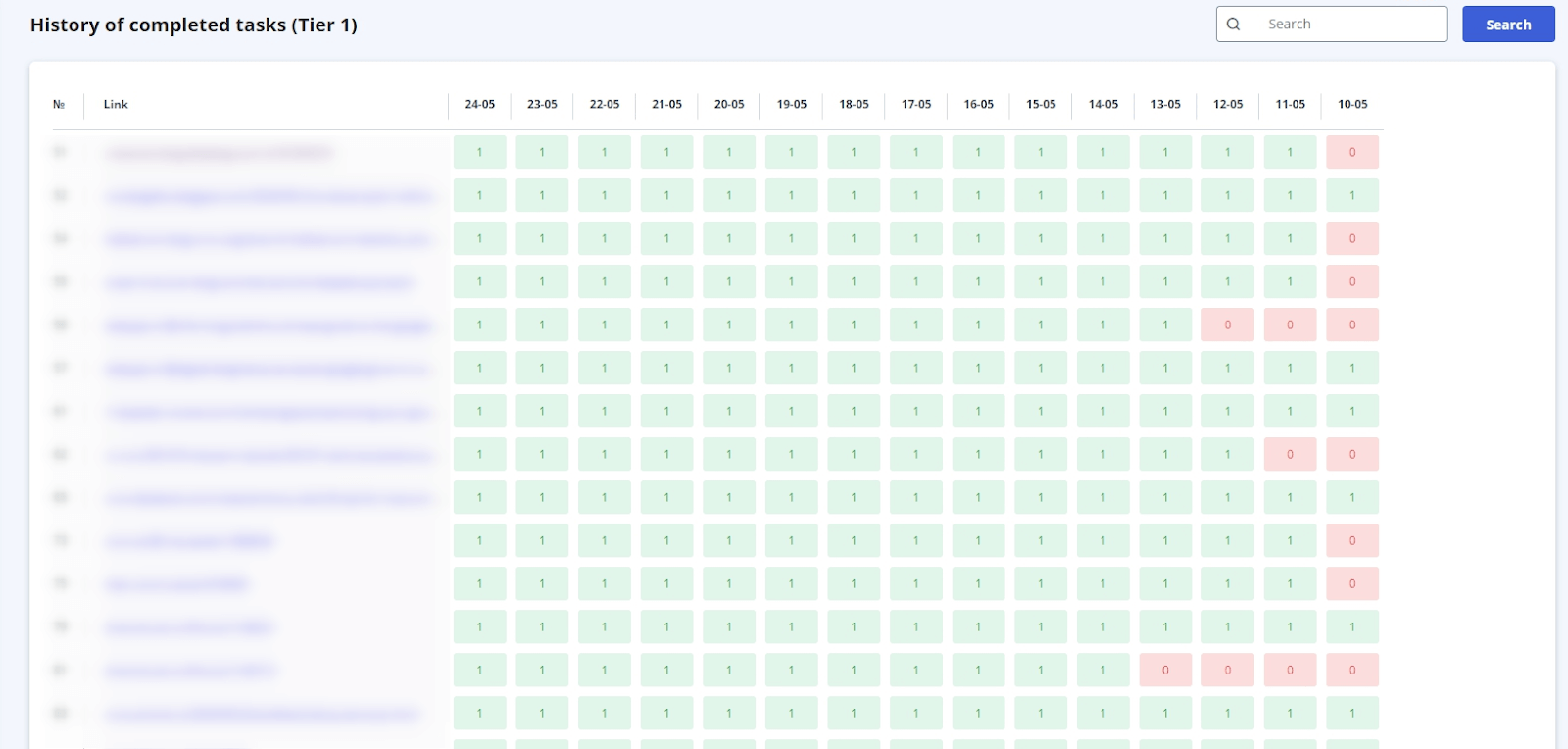
- When Google Console updated the links information, we downloaded a file with new links and dates:
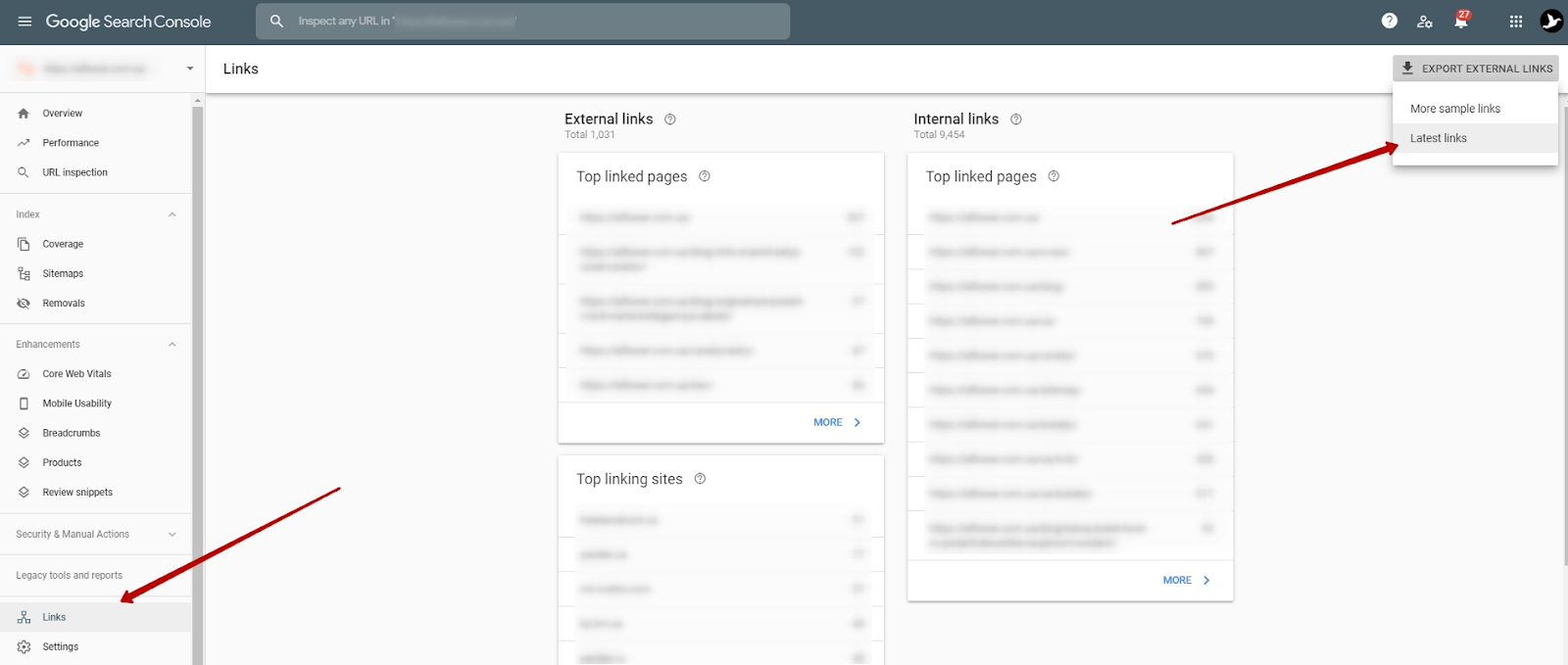
- We have uploaded the file to the Crawlers section in Linkbox:
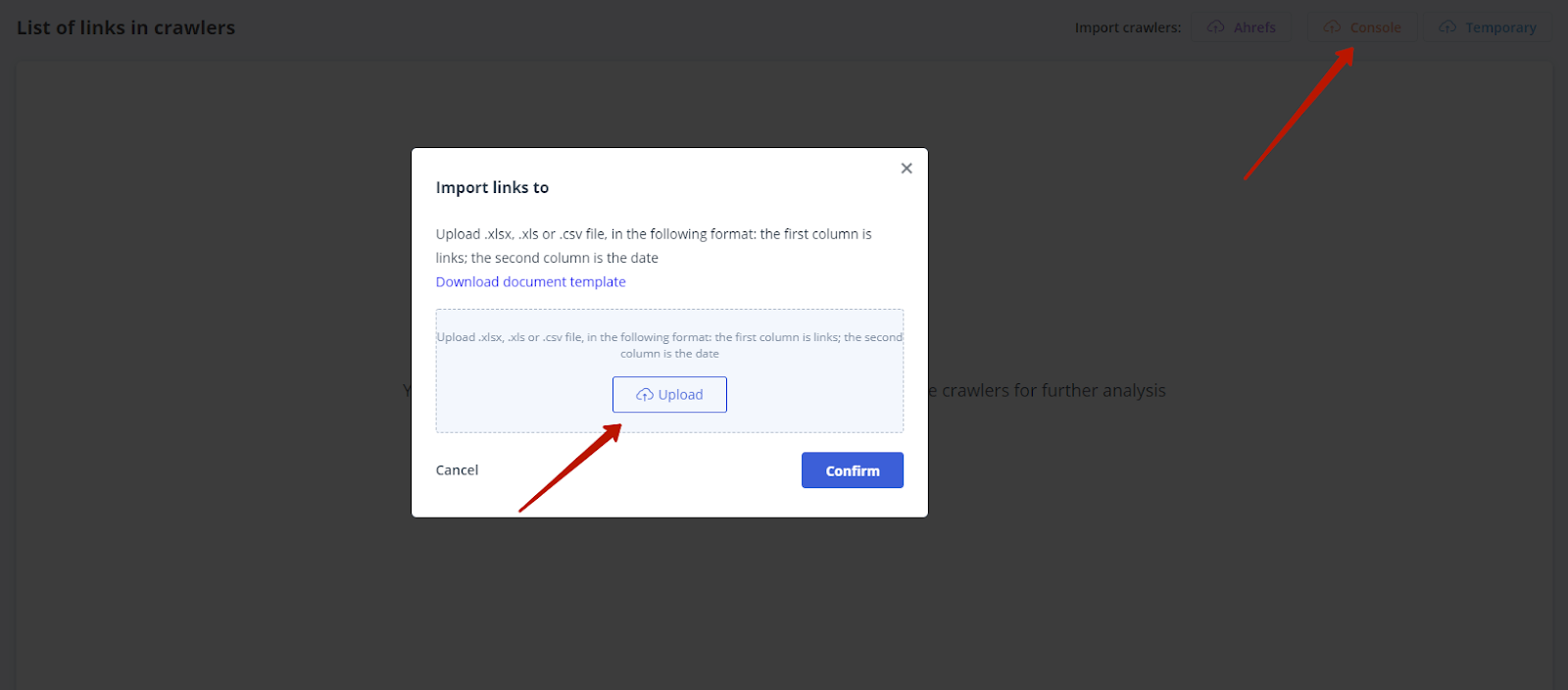
- Then, in the anchor list section, we filtered out links by the intersection with the console and exported the data to Excel. Thus, we received a list of all the links from our experiment and their anchor texts, which hit the Google Search Console during the experiment with the exact date of addition.
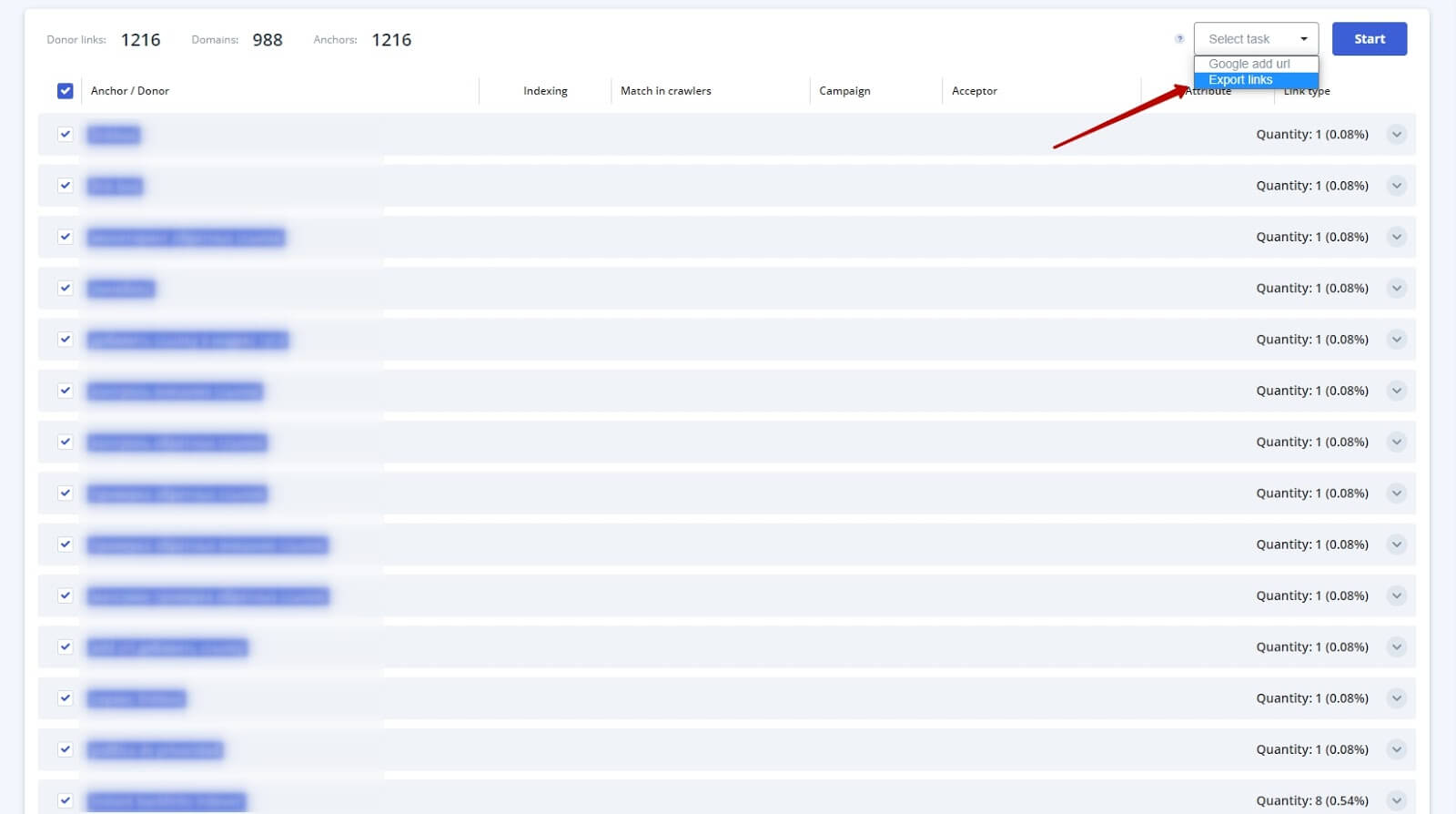
- We exported the position checkout for all anchors (the position checkout was done in Topvisor every day for 2 months) and put an indexing date and date of entry into the Console on it.
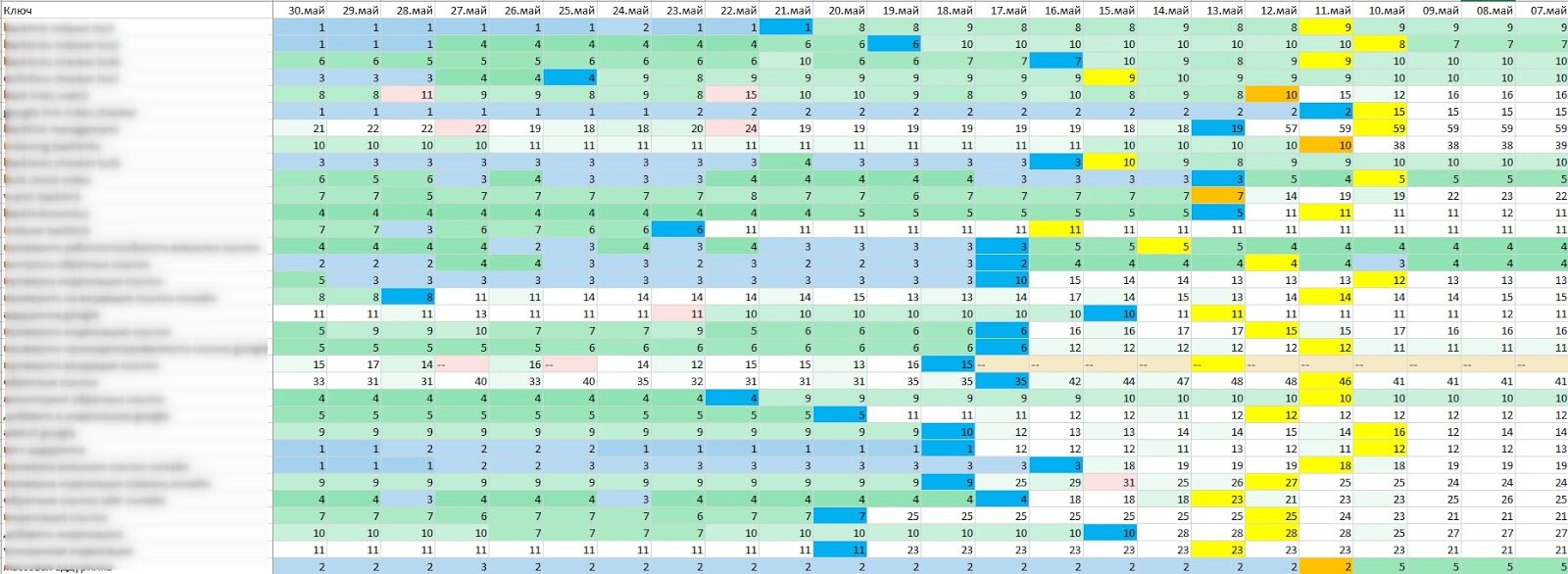
A chart of position change dynamics for indexed links and links in the Google Search Console:
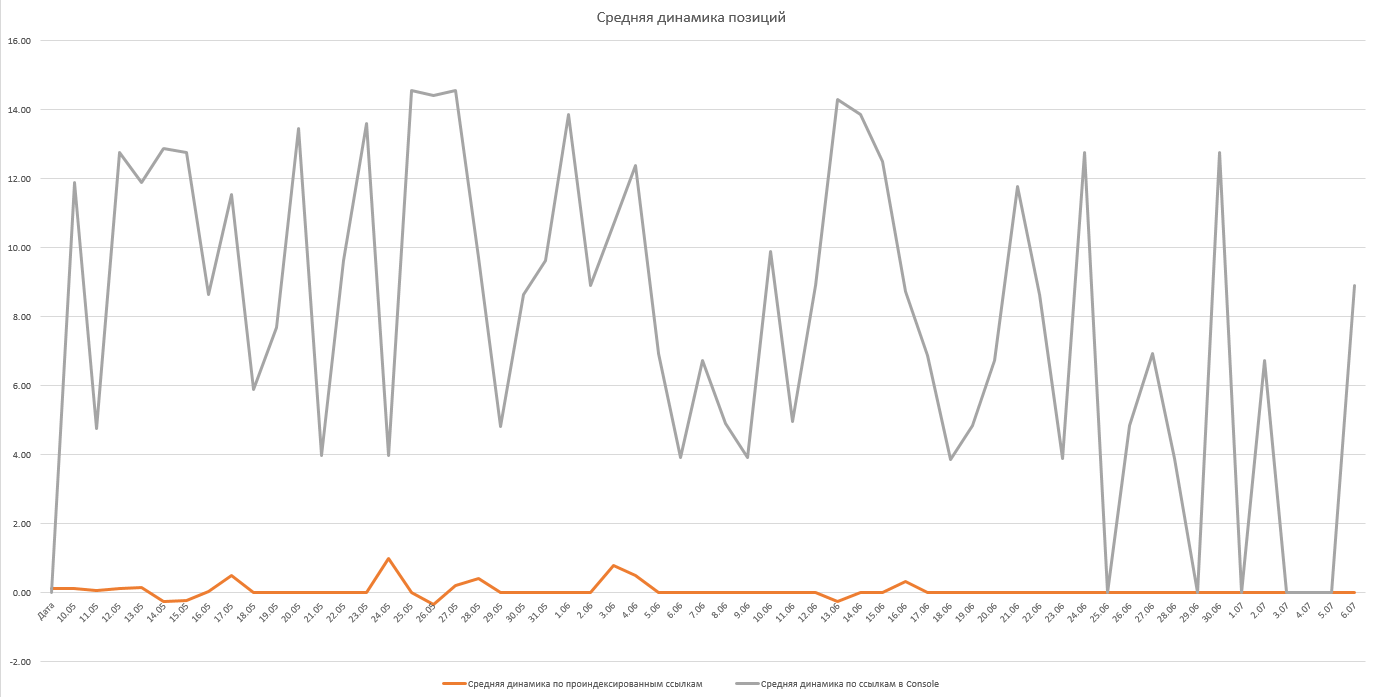
- The average dynamics of positions by anchors of links in the index (orange color) and links in the Console (grey color) for each specific date was calculated to build the chart.
- Links with the same Сonsole and indexing dates were excluded from the analysis.
- The formula for calculating the dynamics of the average position on a particular date:

Where a1, a2, a3 are anchor positions on the previous date before entering the Console or indexing; b1, b2, b3 are anchor positions on the date of entry; n is the number of backlinks that entered the Console or indexed on a specific date.
The dynamics of backlinks entering the Google Search Console:
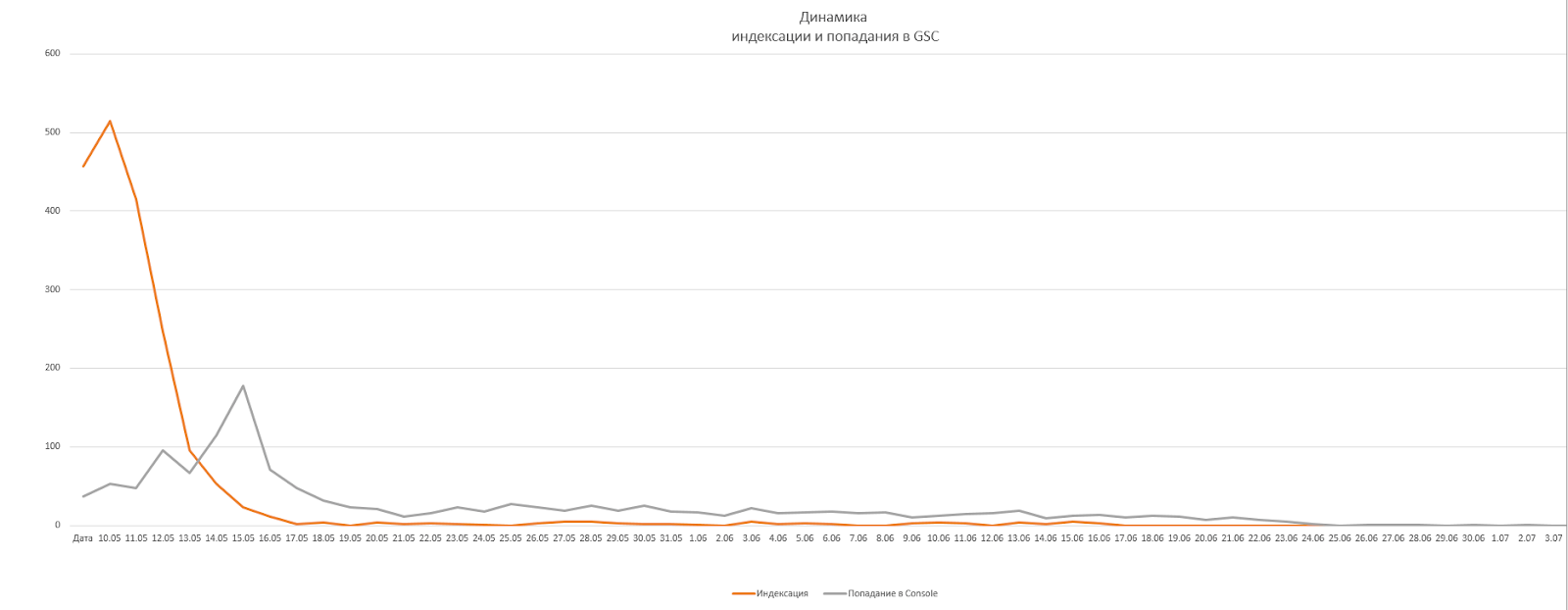
- About 800+ links entered the Console within 2 weeks.
- Another 500+ backlinks entered the Console in the next 2 months.
- 100+ links dropped out from the Console at the same time.
Note that keyword position data is updated online, and link data in the Console is updated every 10-14 days on average. This should be taken into account for the experiment because you need to see updated links for the past period in the Console to be able to compare them.
Some interesting cases in link accounting
One can see such versions of Google behavior:
- The links were indexed but did not add it to the Console
- The links were not indexed and still entered the Console (very rare)
- The links were indexed and entered the Console
- The link entered the Console and then dropped out (such links often drop out of the index as well).
Conclusions and results
About 400 links showed tangible positive dynamics in the target anchors.
In fact, on the day of indexation, only 37 links showed positive dynamics.
But these very same links also got into the Console on the first day (so we decided not to take into account all the links that intersected on the same day with the index and entered the Console).
But the position of the other anchors increased as soon as these links entered the Google Search Console.
The conclusion on the top issue:
Backlinks start working right when they enter the Google Search Console. We have established a direct connection between the target anchor of the link in the Console and its position on this keyword in SERP.
Links clearly pass the weight when they are added to the Console, not when the page was indexed. Which is logical since Google's resources are enormous but not unlimited and it still takes time to calculate the passed weight. We have also noticed that when a link drops out of an index, the probability of the link dropping out of the Console is quite high - more than 80%. This shows that for the link to work well, you need to have the donor page in the index.
What is there to know from the experiment?
Any experiments' results in SEO should have an applied meaning. We will try to give some potential applications of the results of this experiment:
- When falling under a link filter, you should first analyze and reject the links in the Console.
- When calculating link ratios: anchor/not anchor, dofollow/nofollow, etc., you should first analyze the Console. We've seen cases when these links in the console differed in many ways from the general picture of other crawlers like Moz, Ahrefs.
- The most effective way: optimization of your backlink strategy. Knowing the exact moment of link accounting, you can easily conduct mini-experiments and track which types of backlinks work best, how to make an anchor list for a good result, etc.
Generally, the scope of such an experiment is limited only by your imagination, so share your ideas in the comments.
How does Google account backlinks?
The sequence of links accounting, according to our observations, looks like this:
- A Google bot finds a page and adds it to the index.
- Next, the Google algorithm processes links from the pages scanned by the bot and calculates the juice they pass to the acceptor. Right after that the backlinks get to the Google Search Console of the acceptor.
The lines of processing donor pages are not clear yet, as there are links that entered the index instantly and entered the Google Console a week later, and there are those that entered the Console almost immediately, provided that they were indexed simultaneously.
Complementary observations:
- Also, the further observation showed that, on average, 80% of indexed links are still in the Console, so indexing the page and keeping it there is the most important criterion for passing the weight of the link to the acceptor.
- We should also mention a very interesting fact: the article posted on Yandex.Zen was not indexed as it is forbidden to index by meta robots tag, but it still entered the Console. And the position on the target anchor has grown significantly, so in some cases, Google takes into account backlinks closed from indexing. This shows that sometimes the link indexing and link accounting algorithms work independently of each other.
We hope our article helped you with this. If you have any questions, we will certainly answer them in our comments.
To work with backlinks, as described in this article, you need a minimum set of tools:
- Linkbox (or any similar tool that can check backlinks and receive anchors from Google Console);
- Topvisor (or another service that can check positions);
- Google Search Console.




